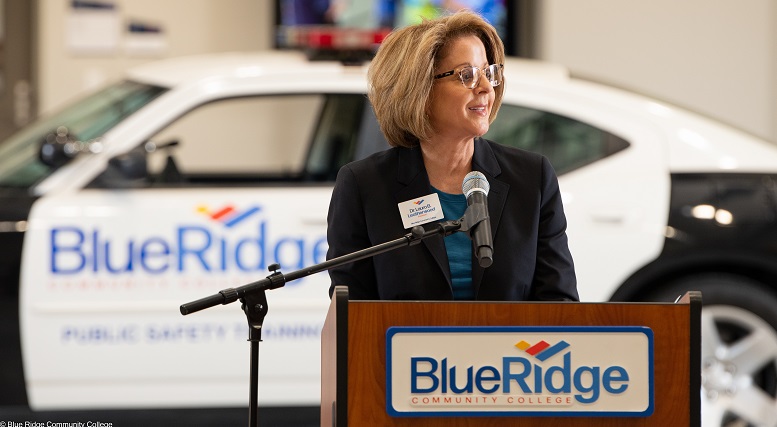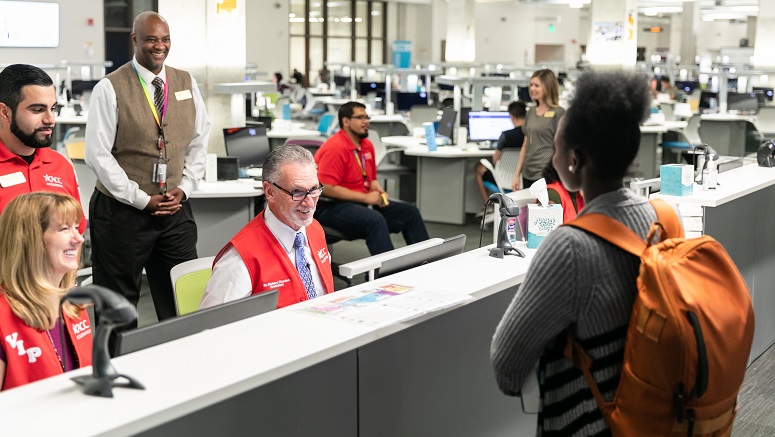Collaborative leadership is becoming more common in community colleges and other organizations, replacing traditional top-down approaches to management — and for good reasons.
In leveraging the ideas of a broad range of people, collaborative leadership often leads to innovative methods. It also boosts employee morale, as team members feel a greater sense of satisfaction when they have a role in decision-making.
And it’s how Austin Community College (ACC) District Chancellor Richard Rhodes leads: Every team member is important.
“It doesn’t matter what your position is,” Rhodes observes. “Everybody is a leader.”
This attitude is a core component of collaborative leadership, a management style in which leaders encourage employees to contribute their own ideas and work together to develop solutions for meeting institutional goals.
This article comes from the current issue of the Community College Journal, published by the American Association of Community Colleges since 1930.
At ACC — a community college district the size of Connecticut, with 11 campuses serving about 76,000 total students — Rhodes has established the mantra: “Innovation plus collaboration equals transformation.” From cabinet members to faculty and staff, everyone is empowered to find better ways of serving students and the community.
As a result of this approach, ACC operates not one but three small-business incubators that are helping companies in the Austin area to flourish. Independent Austin PBS television station KLRU is leaving the University of Texas at Austin to relocate on the ACC campus in a brand-new facility with state-of-the-art studios and digital equipment that also supports the nation’s first podcasting degree at a community college. ACC’s culinary arts program is so highly regarded that it recently hosted a national cake-baking TV show.
And the college’s ACCelerator, an open learning lab with more than 600 computer workstations for improving developmental math, has been so successful that it has been recognized as a national model by First Lady Jill Biden and others.
Collaborative leadership can be hard to pull off effectively. Rhodes and other college executives say it requires a culture built around trust and support.
Earning buy-in
Collaborative leadership is important for getting stakeholders on board with key changes.
“Nearly every decision we make as leaders has implications for many people and departments,” says Laura B. Leatherwood, president of Blue Ridge Community College in North Carolina. “Therefore, we must do the work of understanding and predicting the consequences of our decisions and how others will react.”
By involving others, Leatherwood explains, collaborative leaders reduce the risk of making the wrong decisions and avoid unintended consequences from change.
When Leatherwood arrived at Blue Ridge in 2017, enrollment was declining. A brand perception survey revealed that many people within the community considered the college to be a second-class school with a vocational curriculum.

Leatherwood engaged the entire college community in a rebranding effort to help people realize the tremendous value that Blue Ridge brings to the region. She conducted surveys and embarked on a “listening tour” to get input from both internal and external stakeholders. She also created a Brand Council with select faculty, staff, and students across the college’s three campuses. Council members served as a sounding board for initial brand concepts as well as ambassadors for the new brand.
The effort included a new tagline for the college, “Education Elevated,” as well as a campaign to transform opinions of local industries such as advanced manufacturing. “It needed a change in perception for students to better understand what modern manufacturing is in the 21st century — no longer the dark industrial spaces from decades past, but rather technologically advanced spaces that require advanced knowledge of mechatronics and mechanical engineering,” Leatherwood says.
As a result of these efforts, enrollment at Blue Ridge has increased, and a new “Made in Henderson County” advanced manufacturing apprenticeship program exists in partnership with Henderson County Public Schools. Leatherwood’s commitment to collaborative leadership is one reason she was chosen as the North Carolina Community College System’s 2022 President of the Year.
Empowering employees
Collaborative leadership involves recognizing that everyone has something to contribute and empowering them with a voice in key decisions.
At ACC, Rhodes quickly recognized that students who entered college needing developmental math skills had a low success rate. To reverse this trend, he challenged math faculty to find a solution. Math instructors were given opportunities to visit other institutions around the country that were helping students learn math effectively, such as Virginia Tech and the University of Alabama. Based on this insight, faculty were asked to design the kind of space and support services that would allow ACC students to succeed at math.
“They took that task seriously,” Rhodes says. “They came back, designed, and recommended — and we implemented—what I would say is the best learning space possible for our community.”
The ACCelerator is a 604-station computer lab in which students have access to instructors, tutors, and academic coaches, as well as computer-adaptive math software. The facility (and the developmental math course that uses it) enables students to reach college-level math in a self-paced, highly supportive environment.
The initiative has proven to be so successful that when Jill Biden was the second lady of the United States, she visited the ACCelerator. In conversations with faculty and students, she met a woman named Jenny Bragdon, who was returning to school after 20 years. Bragdon said she used to struggle with math, but her experience with the ACCelerator changed her entire outlook — and she wanted to become a math teacher to help others. Biden was so impressed that she invited Bragdon to be her guest for the 2016 State of the Union Address.
“It’s opportunities like that where, if you empower your faculty, they’ll take off with it and make you very proud,” Rhodes says.

